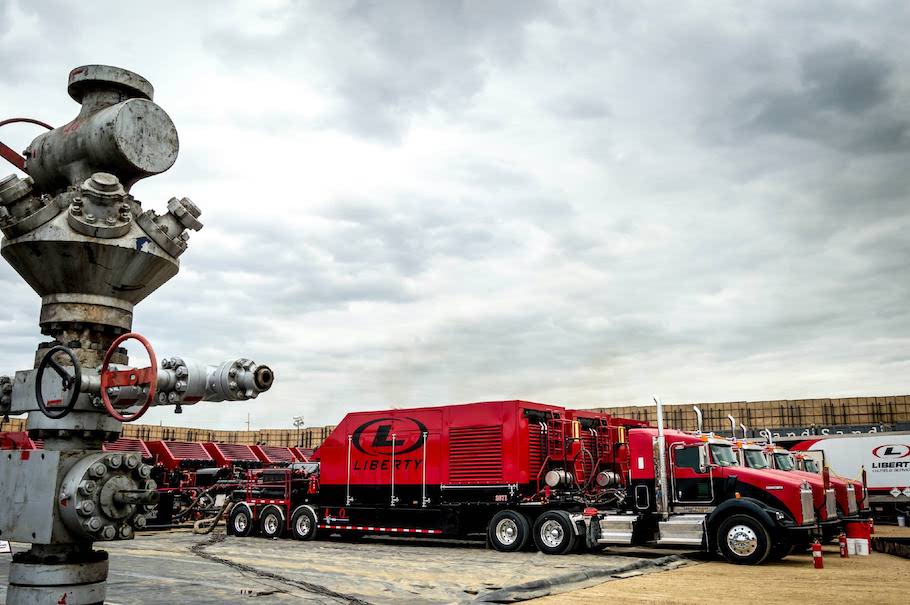Presented by:

This article appears in the E&P newsletter. Subscribe to the E&P newsletter here.
The oil and gas industry has relied heavily on technological advances in recent years to help bring down the costs of drilling and completions. These efforts have resulted in significant improvements to processes such as completions, among others. Even though oil prices have now risen above $100/bbl again for the first time in several years, the industry will continue to benefit from the technological gains made.
Innovation focus
Liberty Oilfield Services took over Schlumberger’s North American hydraulic fracturing business, known as OneStim, in December 2020. At the time, Liberty said the acquisition strengthened its position in offering “one of the most innovative suites of completion services and technologies” to operators.

“The OneStim acquisition was exciting for Liberty from a perspective of expanding to several other basins, vertical integration with mines and wireline and their technical innovation,” Leen Weijers, Liberty’s vice president of engineering, told Hart Energy's E&P. “At Liberty, we have jumped on the electrification of a frac fleet in a project we call digiFrac, combining Schlumberger’s electric backside with our own ST9 electric pump design. This will deliver reduced fuel consumption, lower fuel bills and lower emissions to our customers starting later this year.”
Weijers also cited Schlumberger’s software development for pump control and job execution as further examples of areas in which Liberty is now benefiting.
Efforts to create larger and denser fracture systems have been underway since the shale industry first took off, and Weijers said Liberty has been completing longer laterals and placing more proppant and fluid per lateral foot in every basin to this end.
“A recent addition to this development has been to perforate more perforation clusters along a stage using an extreme limited entry treatment design that is more successful in catering to all perforation clusters,” he added. “This is a very cost-effective method to create more fractures along the wellbore, boost early production and add some reserves.”
Liberty aims to reduce its customers’ cost of bringing a barrel of oil to the surface through a variety of tools.
“This focus on $/BO, which is one of the most important goals of Liberty’s Tech Team workflow, has helped push our industry to cost savings from fewer stages, while the effective denser perforation clustering has been instrumental to boost productivity, hence lowering $/BO,” Weijers said.
He noted that over the past decade, the cost to produce a U.S. barrel of oil had been reduced by 75% on average.

Targeting production challenges
Tendeka is another oilfield service firm with a focus on innovation. The company offers its services to both conventional and unconventional producers and sees an ongoing need for continued innovation aimed at both.
Tendeka’s vice president for North and South America, Jim McGowin, told Hart Energy's E&P there had actually been less innovation than usual over the last two the three years as the industry scaled back spending.

“With regard to trends in unconventional completions hardware, there has been little to no innovation applied in the last two to three years, with the exception of various types of dissolving frac plugs. The drive continues to be cost reduction,” he said. “However, there have been some interesting developments in the fluids space, for example, utilizing non-corrosive, environmentally friendly acid technology to expedite perforating operations. Additionally, the use of environmentally friendly products used in EOR operations are getting attention.”
McGowin also highlighted wireless completions as a significant innovation.
“Wireless completions such as Tendeka’s PulseEight dynamic downhole reservoir management system are game changers for the industry and pave the way to digitalization,” he said. “PulseEight is the world’s first redeployable wireless completion with control, power, monitoring and communications already on board. In contrast to a fixed intelligent completion, operators can deploy PulseEight on wireline in any well at the required depth, program it to dynamically manage drainage with infinite variability, then pull, reprogram and redeploy elsewhere.”
The company is also seeing potential to apply the completions lessons learned to wells with different characteristics.
“Tendeka has a long history of providing advanced completions solutions particularly in newly drilled, ultralong horizontal producing reservoirs,” McGowin said. “However, in the past two to three years, the design philosophy and the lessons learned have been successfully applied from a reservoir engineering standpoint to much shorter laterals, remedial applications, injection wells both conventionally and via wireless communications.”
Emissions focus
Both Weijers and McGowin noted emissions reduction as an important component of the innovations being pursued by service providers.
“The progress our industry has made over the last decade to be a better neighbor, use a smaller footprint for the amount of work we do, extend equipment life and reduce fuel consumption and emissions on horsepower-hour delivered has been incredible,” Weijers said.
However, the industry has not yet reached the limit of what it can achieve, and these efforts will continue.
“We will continue to rely on oil and gas for some time to come, but it is imperative that we focus on improving the efficiency of production and optimize reservoir recovery with a minimal carbon footprint and that can only be achieved with further innovation,” McGowin said.
Recommended Reading
Report: Freeport LNG Hits Sixth Day of Dwindling Gas Consumption
2024-04-17 - With Freeport LNG operating at a fraction of its full capacity, natural gas futures have fallen following a short rally the week before.
Permian NatGas Hits 15-month Low as Negative Prices Linger
2024-04-16 - Prices at the Waha Hub in West Texas closed at negative $2.99/MMBtu on April 15, its lowest since December 2022.
BP Starts Oil Production at New Offshore Platform in Azerbaijan
2024-04-16 - Azeri Central East offshore platform is the seventh oil platform installed in the Azeri-Chirag-Gunashli field in the Caspian Sea.
US Could Release More SPR Oil to Keep Gas Prices Low, Senior White House Adviser Says
2024-04-16 - White House senior adviser John Podesta stopped short of saying there would be a release from the Strategic Petroleum Reserve any time soon at an industry conference on April 16.
Core Scientific to Expand its Texas Bitcoin Mining Center
2024-04-16 - Core Scientific said its Denton, Texas, data center currently operates 125 megawatts of bitcoin mining with total contracted power of approximately 300 MW.



